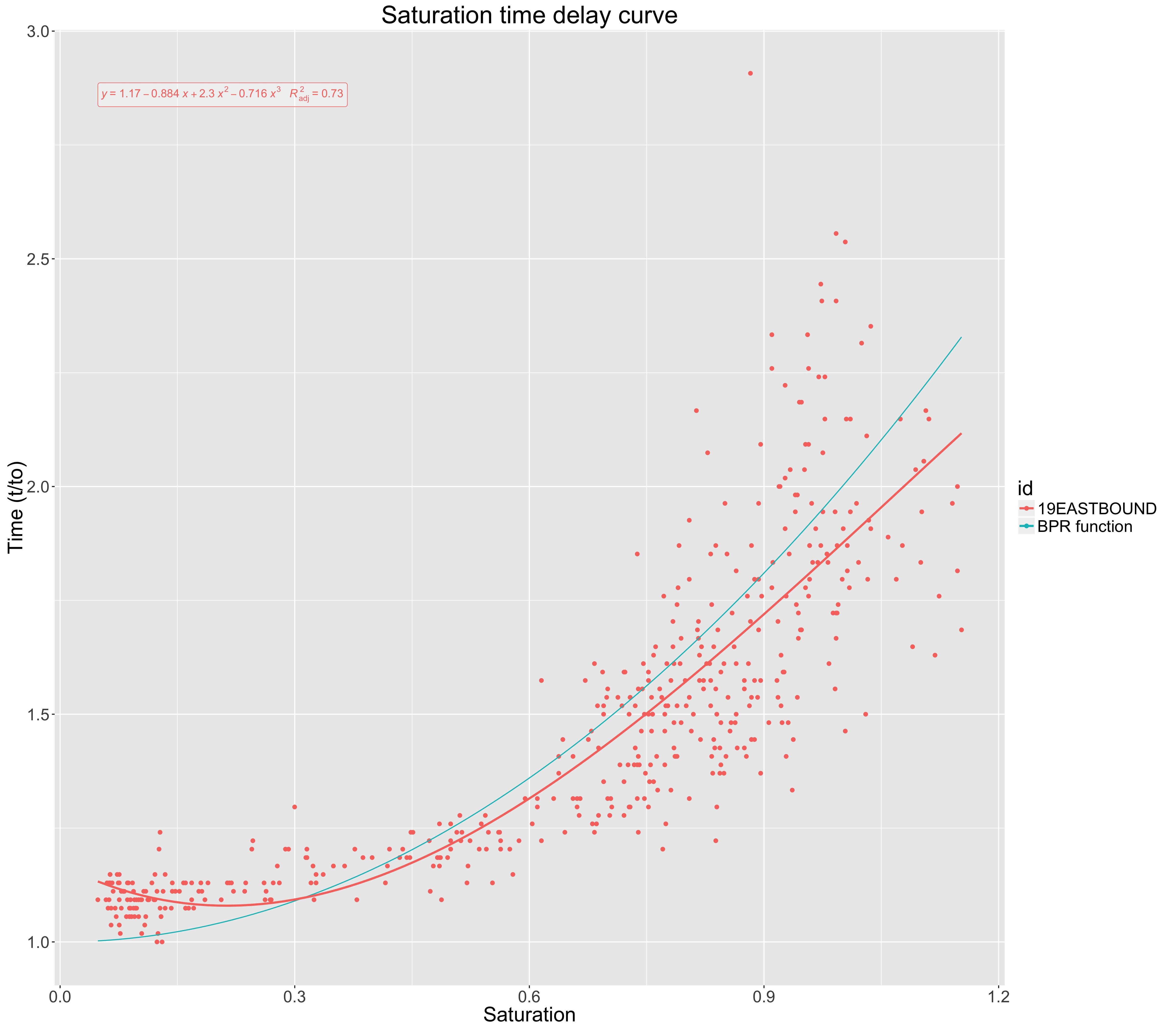Consider a polynomial:
$$ \beta_0 + \beta_1 x + \beta_2 x^2 + \ldots + \beta_k x^k$$
Observe that the polynomial is non-linear in $x$ but that it is linear in $\boldsymbol{\beta}$. If we're trying to estimate $\boldsymbol{\beta}$, this is linear regression!
$$y_i = \beta_0 + \beta_1 x_i + \beta_2 x_i^2 + \ldots + \beta_k x_i^k + \epsilon_i$$
Linearity in $\boldsymbol{\beta} = (\beta_0, \beta_1, \ldots, \beta_k)$ is what matters. When estimating the above equation by least squares, all of the results of linear regression will hold.
Let $\mathit{SST}$ be the total sum of squares, $\mathit{SSE}$ be the explained sum of squares, and $\mathit{SSR}$ be the residual sum of squares. The coefficient of determination $R^2$ is defined as:
$$ R^2 = 1 - \frac{\mathit{SSR}}{\mathit{SST}}$$
And the result of linear regression that $\mathit{SST} = \mathit{SSE} + \mathit{SSR}$ gives $R^2$ it's familiar interpretation as the fraction of variance explained by the model.
SST = SSE + SSR: When is it true and when is it not true?
Let $\hat{y}_i$ be the forecast value of $y_i$ and let $e_i = y_i - \hat{y}_i$ be the residual. Furthermore, let's define the demeaned forecast value as $f_i = \hat{y}_i - \bar{y}$.
Let $\langle ., . \rangle$ denote an inner product. Trivially we have:
\begin{align*}
\langle \mathbf{f} + \mathbf{e}, \mathbf{f} + \mathbf{e} \rangle &= \langle \mathbf{f}, \mathbf{f} \rangle + 2\langle \mathbf{f}, \mathbf{e} \rangle + \langle \mathbf{e}, \mathbf{e} \rangle \\
&= \langle \mathbf{f}, \mathbf{f} \rangle + \langle \mathbf{e}, \mathbf{e} \rangle \quad \quad\text{if $\mathbf{f}$ and $\mathbf{e}$ orthogonal, i.e. their inner product is 0}
\end{align*}
Observe that $\langle \mathbf{a}, \mathbf{b} \rangle = \sum_i a_i b_i$ is a valid inner product. Then we have:
- $\langle \mathbf{f} + \mathbf{e}, \mathbf{f} + \mathbf{e} \rangle = \sum_i \left(y_i - \bar{y} \right)^2 $ is the total sum of squares (SST).
- $\langle \mathbf{f}, \mathbf{f} \rangle = \sum_i \left(\hat{y}_i - \bar{y} \right)^2$ is the explained sum of squares (SSE).
- $\langle \mathbf{e}, \mathbf{e} \rangle = \sum_i \left(y_i - \hat{y}_i \right)^2 $ is the residual sum of squares (SSR).
Thus $SST = SSE + SSR$ is true if the demeaned forecast $\mathbf{f}$ is orthogonal to the residual $\mathbf{e}$. This is true in ordinary least squares linear regression whenever a constant is included in the regression. Another interpretation of ordinary least squares is that you're projecting $\mathbf{y}$ onto the linear span of regressors, hence the residual is orthogonal to that space by construction. Orthogonality of right hand side variables and residuals is not in general true for forecasts $\hat{y}_i$ obtained in other ways.

